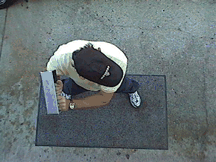Start Quote by Mike Epstein:
1. Turn
2. Torque
3. Tilt
4. Tuck
“Turn” is the counter-rotational move all productive hitters must make.
“Torque” is the separation of the upper and lower torsos (“winding the rubber band).
“Tilt” allows the body to assume a position of being able to match swing plane to pitch plane.
“Tuck” is the correct slotting of the rear elbow at swing launch.
<End Quote by Mike Epstein>
Mike is Da Man!






 Roberto Clemente and Hank Aaron both did this my friends. Take a look at this! Wow! Nice clip siggy. peace, Shep
Roberto Clemente and Hank Aaron both did this my friends. Take a look at this! Wow! Nice clip siggy. peace, Shep This swing was steady, consistent and rotational. It is no wonder why Pete Rose will always be the all-time hits leader. His swing was as textbook and mechanically sound as any other hitter I've ever seen play this game with passion over a long period of time. Pete Rose should be in the HOF and will be one of these days. We will all see the ban lifted soon!
This swing was steady, consistent and rotational. It is no wonder why Pete Rose will always be the all-time hits leader. His swing was as textbook and mechanically sound as any other hitter I've ever seen play this game with passion over a long period of time. Pete Rose should be in the HOF and will be one of these days. We will all see the ban lifted soon!
